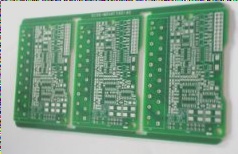Benefits of Using Water-Washable Solder Paste for PCB Assembly
Introduction
Water-washable solder paste is a crucial component in modern circuit board soldering processes. It offers efficient cleaning capabilities and environmental safety, making it a preferred choice for many PCB assembly applications.
Key Information
- Water-washable solder paste consists of various raw materials, including fatty alcohol polyoxyethylene ether, sodium cumene, and more, ensuring strong anti-corrosion properties and controlled pH levels.
- In PCB assembly, water-washable solder paste is used to create reliable connections and can be easily cleaned with water, unlike traditional solder pastes.
- To use water-washable solder paste effectively, clean the joints, apply the paste, solder the components, and ensure proper cooling before releasing the pins.
Best Practices for Using Water-Washable Solder Paste
When working with water-washable solder paste, maintain a clean work environment, seal leftover paste properly, and follow specific guidelines for storage and reuse. It is essential to handle the solder paste with care to maintain its effectiveness.
Comparison with No-Clean Solder Paste
While water-washable solder paste offers easy cleaning and environmental benefits, considerations about cleaning processes, residue, and suitability for high-frequency circuit board soldering exist. Understanding the differences between water-washable and no-clean solder pastes is crucial for selecting the most appropriate option for specific PCB assembly requirements.

Water-Washable Solder Paste: Cleaning and Maintenance
The primary feature of water-washable solder paste is its cleanability. After soldering, the circuit board needs to be soaked in water or alcohol, brushed to remove residues, and rinsed thoroughly. Drying can be done using hot air or natural air drying, with a recommended cleaning time of within four hours to prevent white residue risks. Manufacturers often specify this for optimal solder joint quality and board cleanliness, suitable for PCBA washing machines.
- Water-washable solder paste contains non-corrosive flux, ensuring no impedance effects from solder residue.
- Long-term use poses no risk of solder joint corrosion.
- Residues from this paste can lead to corrosion and impact impedance values.
Reasons for Incomplete Printing of Water-Washable Solder Paste
- Solder Paste Collapse: Insufficient stability can cause spreading beyond the pad edges, risking short circuits after reflow.
- Improper Solder Paste Coverage: Incorrect coverage can lead to insufficient or excess solder, impacting circuit functionality.
- Solder Paste Short Circuit: Wet bridging can cause short circuits if not addressed before reflow.
- Solder Paste Misalignment: Misalignment can result in bridging or solder deposition issues.
Differences Between Water-Washable and No-Clean Solder Paste
No-clean solder paste features low solid content and non-corrosive flux, leaving minimal residue post-soldering. It meets cleanliness standards without requiring cleaning, ensuring high insulation resistance. The paste offers excellent printing resolution and reliable performance without cleaning needs.
Why Water-Soluble Solder Paste Can Be Washed
Water-soluble solder paste eliminates the need for post-soldering cleaning, maintaining a smooth surface with minimal residue. It passes electrical tests and maintains high insulation resistance even in damp conditions, preventing short circuits or erosion.
Pricing of Water-Washable Solder Paste
Water-washable solder paste prices vary based on quantity, with larger quantities costing around 10 yuan per kilogram and smaller quantities at approximately 20 yuan per kilogram. Wholesale prices typically hover around 15 yuan per kilogram.



